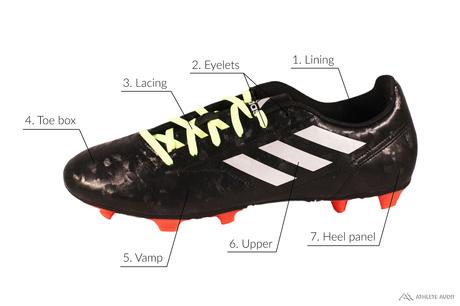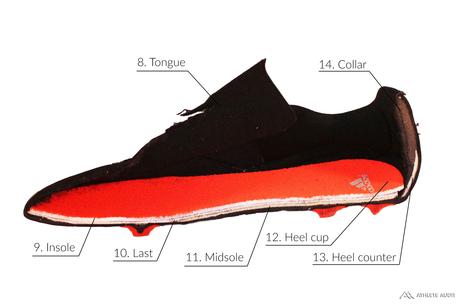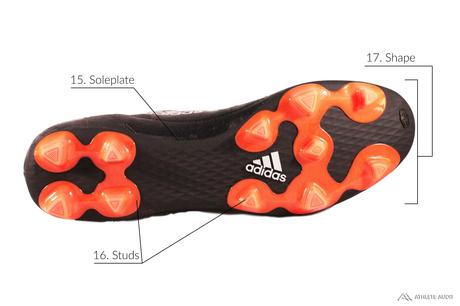Parts of a Soccer Cleat



- Lining – The sock-like fabric on the inside of the shoe, improves comfort
- Eyelets – Holes in the upper help to keep the laces in place
- Lacing – Soccer cleats use traditional laces allowing for the most adjustment in fit
- Toe box – A flexible toe box allows for efficient running and dynamic movements
- Vamp – Covers the forepart of the cleat, provides excellent feel
- Upper – Thin, lightweight material such as leather, kangaroo leather, or synthetics is often used for a better feel
- Heel panel – The piece of fabric covering the heel
- Tongue – A thin tongue with minimal padding helps to improve feel
- Insole – The footbed of the cleat, provides comfort and support
- Last – Underneath the insole lies the last, which determines the shape of the cleat
- Midsole – The cushioning in-between the insole and outsole, thin which allows you to feel the ground more
- Heel cup – A snug heel cup helps to lock down the heel
- Heel counter – The rigid plastic insert behind the shoe that keeps the structural integrity of the heel
- Collar – A padded collar helps to improve comfort and fit
- Soleplate – A stiff, lightweight soleplate houses the studs
- Studs – Often made of molded plastic, provides traction on soccer fields
- Shape – Determined by the last, the shape of a cleat will affect the fit in the heel, arch, and forefoot
Learn how to choose soccer cleats here




